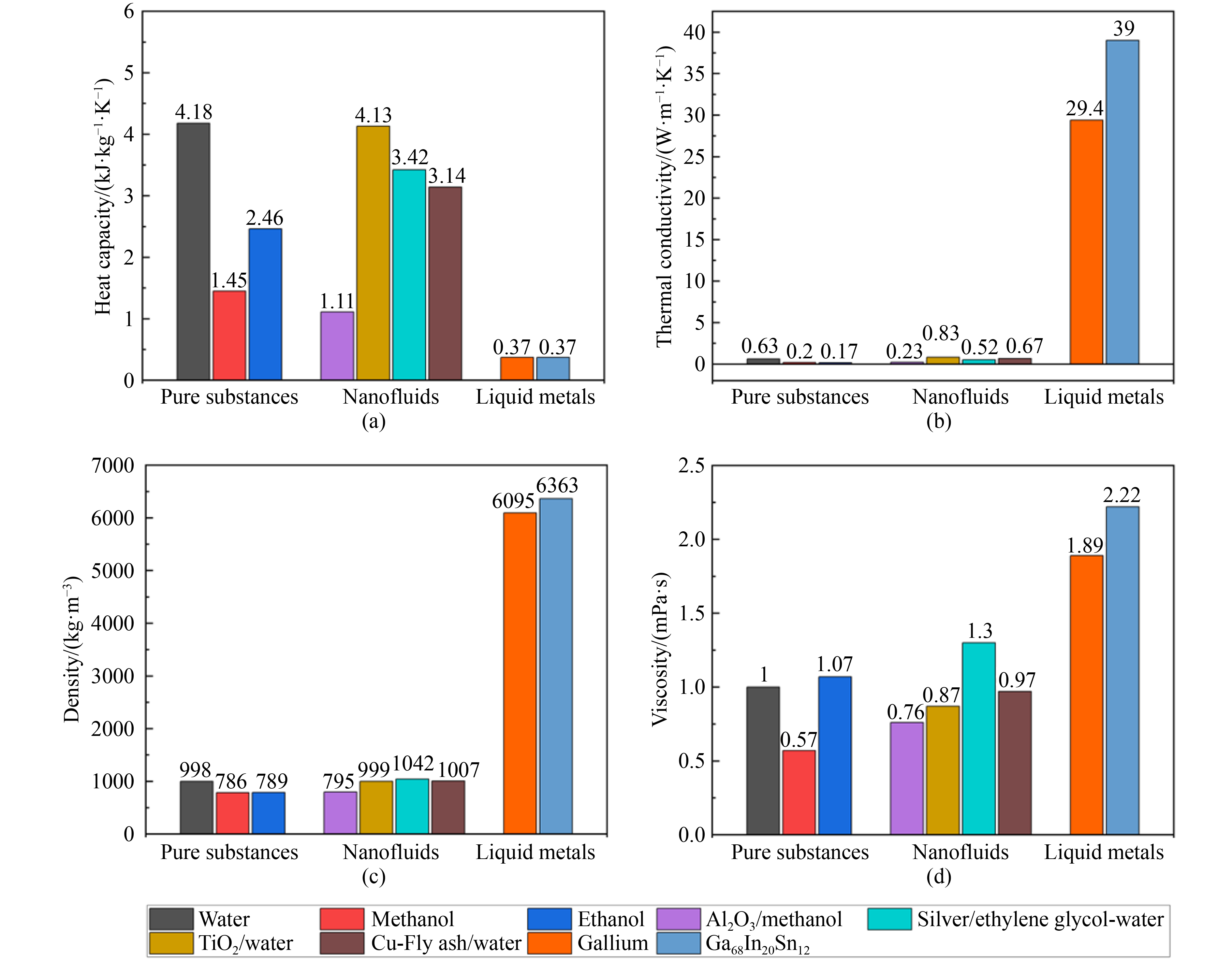Compared to MCHSs, E-MCHSs introduce a new structural parameter (
h2) which changes the heat transfer performance and the thermal resistance ratio. Fig.5 presents the influence of
h2 ranging from −0.7 to 0.7 mm on the thermal resistance, pressure drop, and
P. The weak ability of the liquid metal to take away the heat (low
Cp) is the main reason to induce the larger thermal resistance. Thus, creating a gap to allow more liquid metal through the heat sink at a lower pressure drop and a lower
P is beneficial for reducing the thermal resistance. Obviously, the
Rt of E-MCHS decreases with the increase in the absolute value of
h2 (i.e., |
h2|). The
Rt is reduced by 22.1% and 15.3% respectively at
h2 = 0.6 mm and
h2 = −0.6 mm when
n = 50. The wider channels (smaller
n) could also provide a larger space for the coolant. Thus, the gain of E-MCHSs gradually decreases as
n decreases. When
n = 30, the thermal resistance decreases by 7.7% and 5.5% when
h2 is equal to 0.2 and −0.2 mm, respectively. However, there is a limit to increasing the total height (
H) and width of the heat sink to obtain a better performance. For example, the
H of fins will reach 6 mm for the 4 cm (
W) × 4 cm (
L) heat sinks with
n = 10 and
β (channel aspect ratio,
H/
Wc)= 3. The heat sink is not suitable for heat dissipation in a small space. Therefore, although the thermal resistance still seems to decrease as
n increases, the performance of E-MCHSs with a smaller
n has not been simulated. For the case where the size of the heat dissipation space is determined (
H and
W are fixed), the
h2 becomes the new structural parameter for heat dissipation optimization. The revised empirical correlations are also used to calculate the heat transfer of E-MCHS and MCHSs. The result calculated by the revised empirical correlations shows the same trend as that of the simulation. But there exists a distinct deviation as
n increases. The authors of this paper conjecture that it is the limitation of the empirical correlations (8)‒(10) instead of the correction of fin efficiency that causes this deviation. The flow of liquid metal is thermally developed. Thus, hydrodynamic development and the thermally fully developed heat transfer correlation are inaccurate under this condition [
53]. When the coolant is changed to water, the revised empirical correlations are consistent with the simulation results. Therefore, the correction of fin efficiency is retained.
















